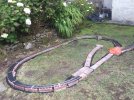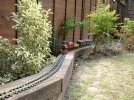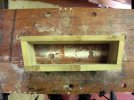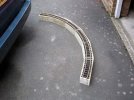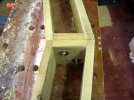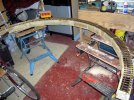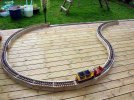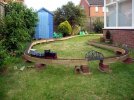Portsladepete
Registered
My layout consists of track on top of brick sized blocks laid in a bed of chippings. My idea was that it would be easier to get each block level, and that the chippings would hold them in place without too much risk of them settling into the bare earth.
This worked, to a point, individual blocks , (they know who they are) were a pain in the backside, but are now reasonably level. I now want to lay 6”x2” timber on top of the blocks, as the track is too near the edge and doesn’t look right in my eyes, it will also avoid any stubborn blocks causing slight dips.
My question is, how do you cut the timber to go round the semi circle, I haven’t got a mitre block anywhere near the size to accommodate the 6“x2” timber, and was hoping there’s some devilishly simple way of cutting the angles so it looks reasonably neat. Any suggestions very welcome. Thanks
This worked, to a point, individual blocks , (they know who they are) were a pain in the backside, but are now reasonably level. I now want to lay 6”x2” timber on top of the blocks, as the track is too near the edge and doesn’t look right in my eyes, it will also avoid any stubborn blocks causing slight dips.
My question is, how do you cut the timber to go round the semi circle, I haven’t got a mitre block anywhere near the size to accommodate the 6“x2” timber, and was hoping there’s some devilishly simple way of cutting the angles so it looks reasonably neat. Any suggestions very welcome. Thanks

